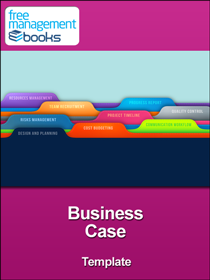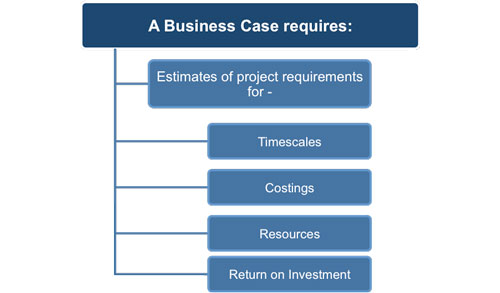
Project Business Case Template
This template is designed so that it can be used as a guide when writing a business case to ensure that your project is presented in a persuasive and coherent manner.
It provides the headings that need to be completed for each section and then allocates space for you to make high-level notes about your specific project that need to be detailed and a full explanation given in the actual business case document. It is meant as an aid to producing a business case not a skeletal document that has gaps left for specific project information to be inserted.
Detail High-level Business Objectives
Organizations are continually responding to the opportunities and threats they face and the business case forms an essential part of the strategic and qualification process of how to react to these economic changes. The contents of the business case whilst high-level are not insubstantial. The objectives and strategic importance to the organization must be explicit and include the following:
• It’s contribution to the organization’s growth strategy.
• Description of all potential risks and the way in which these can be addressed.
• Financial data that is detailed and accurate ensuring the production of the best possible cost benefit analysis.
• Detailed assessment of the necessary project resources using prior experience where practical to ensure accuracy.
The resulting document is then presented to the organization and the project stakeholders for approval. Once this has been attained key project personnel will create the project plan.
Divide it into Sections
Before each section a brief description outlines its purpose and content. There are eight essential sections of a business case.
1) Executive Summary
2) Analysis Team Description
3) Problem or Issue Definition
4) Project Overview
5) Strategic Alignment
6) Cost Benefit Analysis
7) Analysis of Alternatives
8) Sign off & Approvals.
The business case is the document that is produced to illustrate the cost-benefit and required investment the organization would need to undertake for the project to go ahead. The motivation for producing a business case usually comes from one of the following:
- Legal requirement
- Market- or customer-driven demand
- Organizational need
- Technological change
A good business case will demonstrate at least the following basic points –
• Why the project was initiated, and what problem it is intended to solve.
• The details of what process was involved in this project, and how it evolved from beginning to end.
• What resources are required to put the plan into action.
• The benefits of putting the plan into action, and the potential problems that could arise from not doing so.
• What specific next step is needed to get the project started.
How Big Does it Need to Be?
Depending on the length and scope of the project, and the reporting requirements of the business, all of those points could be covered in as little as a couple pages, or it could take a binder full of material. The important part is that the manager lays out an argument that is well defended and needs no additional input from outside the case in order to be convincing. The business case should stand on its own feet, able to be read and understood even by someone with no prior knowledge of the project.

This means that stakeholder interests as well as resource and financial implications have a common understanding of what the project entails. With the purpose of the project outlined in this way your next activity is to begin collecting the necessary data for the business case that in turn will be discussed and agreed with the stakeholders. With this consensus you can then proceed to give a detailed description of the problem or issue to be resolved and how it came about.
In the production of a business case it may become apparent that the proposed change is not a viable option for the organization. The key to successful and innovative organizations is making this realization as soon as possible in the process so that costs of business case production are kept to a minimum. The project business case will only be produced in full if the initial research and analysis of the circumstances can clearly demonstrate an organizational benefit.
Then you present the solutions that have been agreed as the most effective. These are usually kept to two or three potential options outlining the assumptions, dependencies and risks associated with each one. The cost-benefit analysis for each option is presented in the following section.
One of the solutions you present will be preferred and a full description and reasoning is outlined in the recommendations of the business case. This preferred option is the one you are asking the executive and stakeholders for their approval so that money, resources and time will be assigned to the project. It also gives the project manager the authority to write a detailed project management plan and the authority to request the desired resources.
Key Points
business case describes the business, its product and the market it will serve. It should point out just exactly what will be sold, to whom and why the business will gain a competitive advantage.
It contains a short executive summary that includes objectives, proposed solution, benefits and costs, risks, and key dates.
It highlights the important financial points of the business including sales, profits, cash flows and return on investment.
It should also list several alternatives that have been considered, complete with costs, benefits, and risk assessment.

Leave a Reply